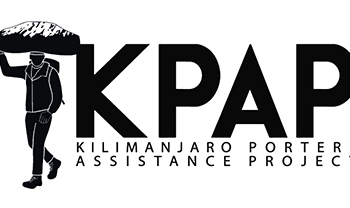Training for Kilimanjaro
Mount Kilimanjaro is the highest peak and needs proper Training for Kilimanjaro's high success rate. Hence it is required to train properly with a Kilimanjaro Training Plan.Your physical fitness is important while climbing Kilimanjaro and makes it easy to climb. You will need to start preparation before 2 weeks of climbing Kilimanjaro. It’s not only physical stamina but mental stamina is also important while climbing Kilimanjaro. It will be a real help on your summit attempt.
-
Diet For The Training:
The high altitude level will require its own type of food intake. It plays a key role while attempting to summit Mount Kilimanjaro. The main diet on Training for Kilimanjaro is to:
Consume Adequate calories: Your body needs extra energy to fuel your adventure.
Consume carbohydrate-rich food: Your body needs carbohydrates at higher altitudes. The main source of carbohydrate is Bread, Pasta, Fruit, Potatoes, Milk, Rice, Quinoa, and Tortillas.
Consume Adequate Protein: Eating about 20 to 30 grams of protein after exercise is enough for overall protein throughout the day is probably sufficient.
Load up iron before your trek: Iron is an important factor while you are on a trek, if you are attempting high altitude with low iron, you may be left feeling fatigued. -
How Fit Do You Have To Be?
First of all, you should know how to train for Kilimanjaro. The best thing to do is, start your training for Kilimanjaro 2-3 weeks prior departure to Kilimanjaro.
The physical and mental fitness levels should be strong and determined. Try to do Fitness Training for Kilimanjaro like short hiking at any nearest hill for 2-3 days continuously. This will be a perfect fitness preparation for your body as it will get adjusted to the climbing.
You can also try out Mount Meru as a practice trek once you reach Tanzania before climbing Kilimanjaro. This will help you with the proper acclimatization while climbing Mount Kilimanjaro. -
How Many Days Will Be Enough For Training?
Wondering How Long Should You Train To Climb Kilimanjaro? It would be better if you start Training For Kilimanjaro yourself before 2 weeks of departure to Kilimanjaro and get adjusted to the terrain levels. However, it is recommended that you will start the training for Kilimanjaro before 2 months if you are a beginner and you should start within shorter time intervals.
So now the question arises - How to Train for Kilimanjaro Climb. We have made a list of Training for Mount Kilimanjaro Climb. Here are the details:
Aerobic training:
The Cardio is one of the best Training For Mt Kilimanjaro. It normally uses more oxygen to meet the energy demands of exercise via aerobic metabolism. The Aerobic exercises which are a bit moderate-intensity are the best answer to How To Train For Kilimanjaro; long-distance hogging, swimming, slow walking, and running. These exercises differ from other high-intensity exercises which are weight lifting and sprinting. -
Strength training:
While you are on your Aerobic training for Kilimanjaro, it is also necessary for you to build the immune system of your body. You will need to do some Strength Training For Kilimanjaro for better fitness. The main strength exercise is particularly for the legs, core, and upper body. The strength exercise includes: Lifting weights, using resistance bands, doing push-ups, pull-ups, crunches, leg squats and push up against walls.
-
Mental Training:
The number of people who climb Kilimanjaro on a successful summit is equally proportional to the mental stamina of the climbers. Mental stamina is important because Mount Kilimanjaro is not a small hill, it is the highest peak of Africa. It has the highest altitude level and may be dangerous if you are not prepared, there is a time when you will feel to give up and get back down. If you have the determination to climb, then you can climb to the summit.
-
Small Hiking practice:
This is one of the best Training to Climb Mt Kilimanjaro, you just get on your boots and start climbing a short hill. You can opt between walking in parks or within local for about 3-4 hours. Choose your nearest hill and give work to your feet for few hours or a full day.
-
Stretching:
Still, wondering How to Train for Kilimanjaro? Add stretching exercises to the regime to build muscle and achieve aerobic fitness. We all need to stretch in order to protect ourselves on top of Mount Kilimanjaro. Stretching keeps the muscles flexible, strong, and healthy, and we need that flexibility to maintain a range of motion in the joints.







